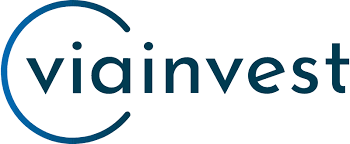Loans
Types of Loans

Whether you’re buying a new car, paying for college, or an unexpected expense leaves you in need of cash, there’s a loan for you.
Loans can help you reach your financial goals, providing you with the capital you need to make big and small purchases when your means don’t quite match your needs.
What Are The Different Types of Loans?
Banks, credit unions, and online lending platforms offer loans for a wide variety of financial needs.
Read on to learn the basics about some of the most common types of loans.
- Personal Loans
- Student Loans
- Auto Loans
- Mortgages
Personal Loans
Most loans are created for super-specific purposes, but personal loans are the exception.
Personal loans do have some common uses, though, outlined below:
- Debt consolidation: In some cases, a personal loan can be more advantageous than a credit card when your goal is consolidation, with significant savings on interest.
- Medical expenses: Unexpected doctor and vet expenses can be outrageously expensive, sometimes necessitating a loan to help with the cost.
- Events: Weddings and other major events lead some people to take out small personal loans.
- Vacations: Vacations are another common reason to take out a manageable personal loan.
- Taxes: When tax time rolls around and you find yourself owing money to Uncle Same, a personal loan can help you avoid the nasty fees of late payments.
- Home repairs: Extensive home updates lead many borrowers to pursue personal loans.
Secured & Unsecured Personal Loans
Personal loans can be either unsecured or secured. In most cases, personal loans are unsecured, which means you don’t have to put forth collateral, like your car or investment accounts.
With that in mind, the rates you get depend on factors like your credit score, income, and credit history. Traditionally, rates for unsecured loans are higher than secured ones as they pose a higher risk to the lender.
How to Get the Best Rates on a Personal Loan
You can get lower interest rates by using a cosigner, or even better rates by working to build your credit.
While terms vary from lender to lender, personal loan amounts usually max out at $100,000 with term lengths between 1 and 10 years.
Personal loans come with fixed rates, a fixed borrowing amount, and fixed repayment terms, so you know what to expect from day one.
When you apply for personal loans, be sure to look out for origination fees and prepayment fees, the latter of which penalizes you for paying off your loan early.
You can compare rates for personal loans with a platform like Lending Tree, which curates the best personal loan offers you’re eligible from top providers.
All you need to do is answer a few quick questions about your finances and what type of personal loan you’re looking for, and you’ll be matched in minutes.
Student Loans
The next most common type of loan you’re bound to run into in life is the student loan. Going to college is fun and exciting, but paying for it isn’t.
Scholarships and grants should be the first place you turn, but more often than not, these funds don’t cover the cost of tuition.
Federal Student Loans
The next place to turn is to federal loans. These loans offered by the US government come with low interest rates and flexible terms that benefit undergrad, graduate students, and parents alike.
Some federal loans are even subsidized, which means they don’t accumulate interest while you’re enrolled in school.
And Direct Loans, one of the most popular types of federal student loans, don’t require a credit check at all. The other main type of federal loan, the PLUS loan, does look at your credit, requiring you to have either a fair credit score or a cosigner.
Both Direct and PLUS loans come with a grace period of 6 months after graduation, during which time you don’t have to make payments.
They also come with income-driven repayment plans and deferment options in case you encounter a difficult financial situation and need to press pause on your payments.
The only thing you need to do to apply for a federal student loan is to complete the FAFSA, short for the Free Application for Federal Student Aid, each year.
Private Student Loans
If you still find yourself in need of more funding, private student loans are a worthwhile option.
Unlike federal student loans, private loans are funded by banks, credit unions, and lenders who specialize in student loans.
When you apply for a student loan, the lender will use your credit score, credit history, and income to determine your rates and the terms of your loan.
How to Get the Best Rates on a Student Loan
Generally speaking, private student loans come with higher interest rates and less flexibility than federal loans. They’re also unsubsidized, meaning you’ll be responsible for paying the interest your loan racks up during school.
However, depending on your credit score, you could get a private student loan with comparable rates to a PLUS loan.
You can also refinance your student loans with a private lender, saving hundreds or thousands of dollars on interest.
Start shopping with a student loan marketplace like Credible to see what rates you’re eligible for.
Auto Loans
Auto Loans can help provide the means for you to purchase a new or used car.
Car loans come in a variety of shapes and sizes, with each lender setting its own criteria for borrowers.
In addition to looking into your credit score and income, many auto lenders have eligibility requirements for vehicles, especially for refinancing loans.
Many car loan lenders require that a vehicle be no more than 8-10 years old, with varying mileage requirements.
Auto loan terms usually fall anywhere from 24-84 months. Though your payments may be higher, it’s smart to opt for an auto loan with a shorter term. Otherwise, you might end up upside down on your loan, owing more than the car is worth.
Before you sign off on a loan, consider your car’s value and how it might depreciate with time.
Start by shopping for rates with a platform that only does a soft credit check with your initial application (keeping your credit score intact).
Mortgages
Your home is one of the most expensive purchases you’ll make, meaning a mortgage is one of the most crucial loans you’ll ever take out.
A mortgage takes the cost of buying a home and spaces it out over the span of a few decades. Most mortgages range between 15 and 30 years, with a 30-year mortgage being the most popular option for borrowers.
The shorter the term, the higher your payments will be. While a short-term’s payments might be manageable with, say, an auto loan on a $20,000 car, they’re a bit more difficult with a $300,000 home.
Types of Home Loans
The main types of mortgages are as follows:
- Traditional mortgage: Conventional home loans are offered by private mortgage lenders and backed by Fannie Mae and Freddie Mac. They come with the highest credit score requirement at 620 for a fixed-rate loan.
- FHA loans: Offered to individuals struggling with their income and credit, these loans are backed by the Federal Housing Administration and come with a credit minimum of only 500 with a downpayment of 10% or higher.
- VA loans: VA loans are offered to members of the US military and come with zero downpayment requirements, no credit minimum across the board, and no mortgage insurance.
Whatever mortgage you choose, play around with the terms of various home loans to see which one fits best into your finances, making sure you’ll be able to stay on top of payments.
How the Right Type of Loan Can Help You
Loans are often the keys that help us unlock our goals and secure our futures.
Borrowing any of the types of loans above requires mindful shopping, consistent payments, and steadily improving and maintaining good credit.
This list of loans is by no means all-encompassing. People take out business loans and other forms of financing regularly.
However, these loans are the ones people are most likely to take out throughout their lives, warranting a closer look.
Unmasking Online Deception: An In-Depth Social Catfish Review
Purple Garden Psychics – ($1/Min) FREE Trial Offers, Real Experience & Benefits And More

Refinancing an Auto Loan: How to Know If It’s a Good Idea

Reverse Mortgages Pros and Cons: Ripoff or a Good Idea?

8 Ways it Just Got Easier to Achieve Student Loan Forgiveness
Unmasking Online Deception: An In-Depth Social Catfish Review

Orchard Bank Credit Cards | NOT a Scam!

PrivacyGuard Review

How to choose where to study as an international student


